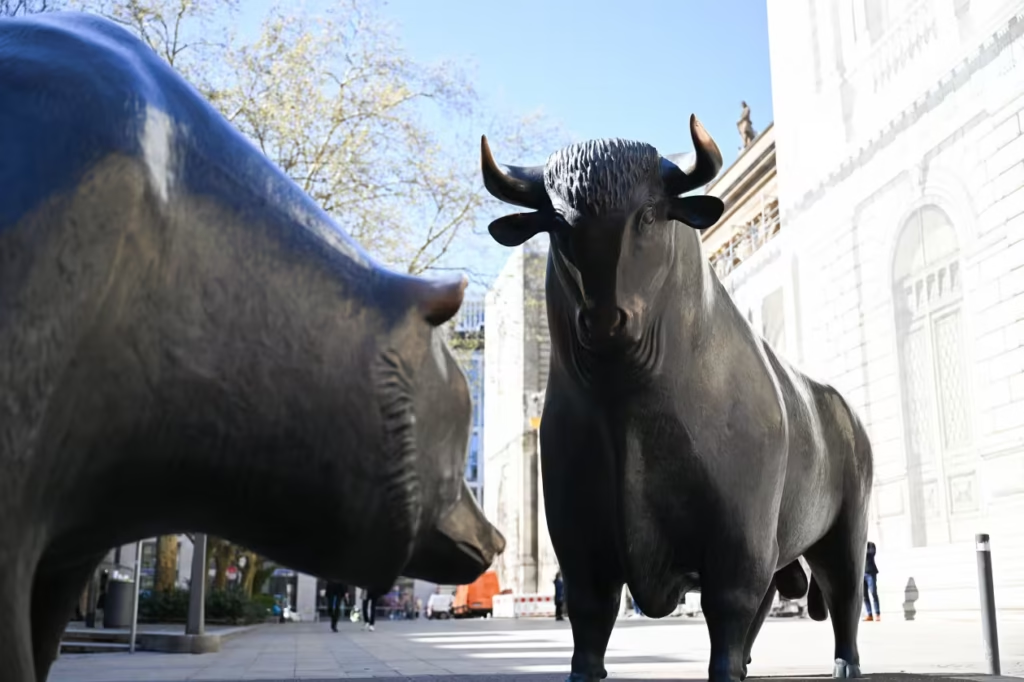If you listen closely, you can hear the markets “whispering big breakout or breakdown for risk assets coming soon.”
In a Friday letter to clients, Bank of America strategist Michael Hartnett outlined the three “Bs” that will best predict the course that those deemed riskier assets—of which stocks are a part—will take.
He cautions that double peaks appearing in the charts of these risk leaders—brokerage stocks XBD, bank stocks IXG, and bitcoin (BTCUSD)—would be extremely negative, whereas clean, upside breaks would be a very positive indication. When a chart peaks at the same level twice without breaking out to higher levels, it is known as a double top, which is a bearish trend reversal indication.
In order to balance the extremes of high and low-risk investments, Hartnett advises bulls to use a barbell method to invest in the Magnificent 7 tech stocks and the rest of the world’s value stocks. He suggests defensives for bears, such as utilities, healthcare, and staples, whose combined weighting in the S&P 500 SPX is at a 25-year low.
Because even “peak tariffs” haven’t been able to push the dollar index DXY back over 100, the strategist believes the markets are indicating that the dollar is in a bear market.
This could be explained by the Trump administration’s frequently stated belief that American manufacturing can become great again with a weaker dollar, as well as the perceived danger to Fed independence as a result of Trump’s pressure on Powell. According to him, this dollar infirmity would point to a positive outlook for gold, emerging markets, and global stocks in general.
As the UST30-year yields BX:TMUBMUSD30Y fell back below the 5% mark, the flow of funds data for the week ending May 28th shows a significant swing of $19.3 billion into bonds. Notably, $2.6 billion flooded into cryptocurrency after Donald Trump’s media group announced plans to invest $2.5 billion in bitcoin.
Hartnett has a strong preference for long bonds that yield 5% more than the S&P 500 index at 6000 levels, and his overall approach is still best summarized by his acronym BIG, which stands for bonds, international, and gold XAU.
He describes how foreign investors have purchased around $350 billion worth of U.S. stocks so far in the 2020s and are still adding to those holdings, which will total $138 billion annually in 2025. In contrast, they bought $200 billion worth of corporate bonds and U.S. Treasury securities during that time, but this year’s inflows have stopped altogether.
According to Hartnett, the main risk at the time is that American politicians would attempt to further inflate the bubble by slashing taxes, rates, and tariffs all at once in a “doomed” attempt to balance debt-to-GDP ratios. This would encourage a more significant flight from U.S. Treasurys.





